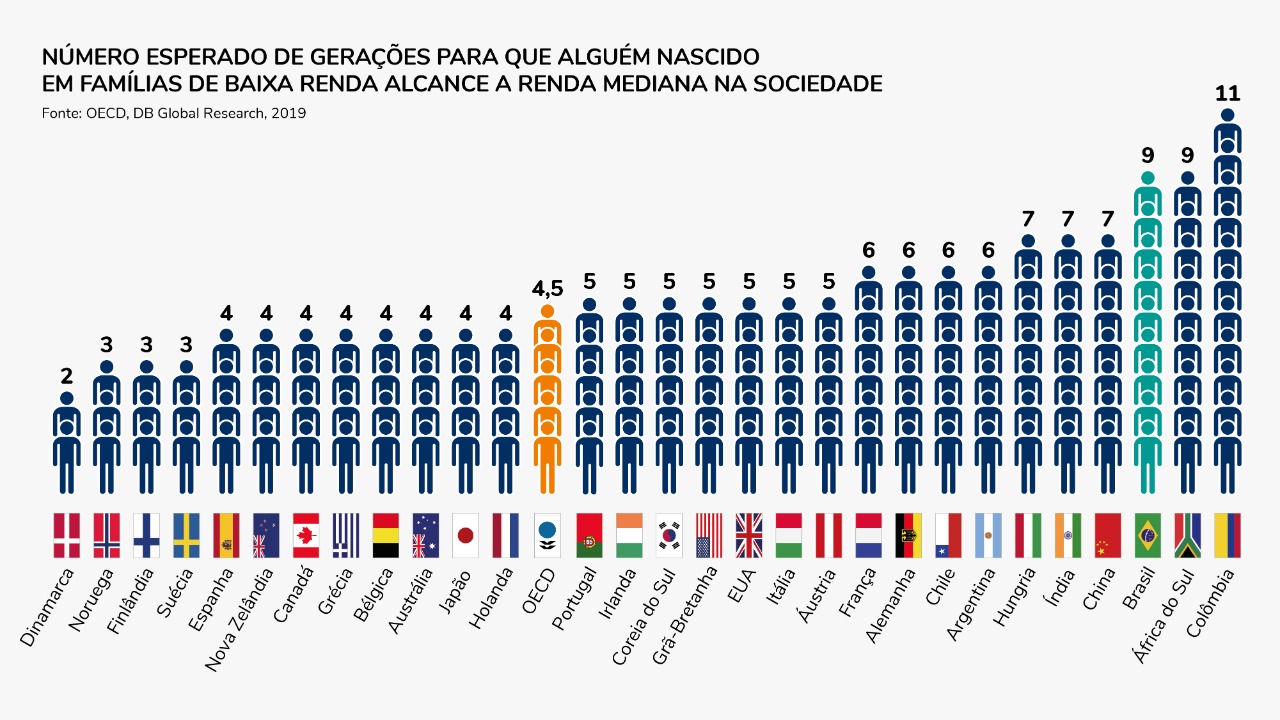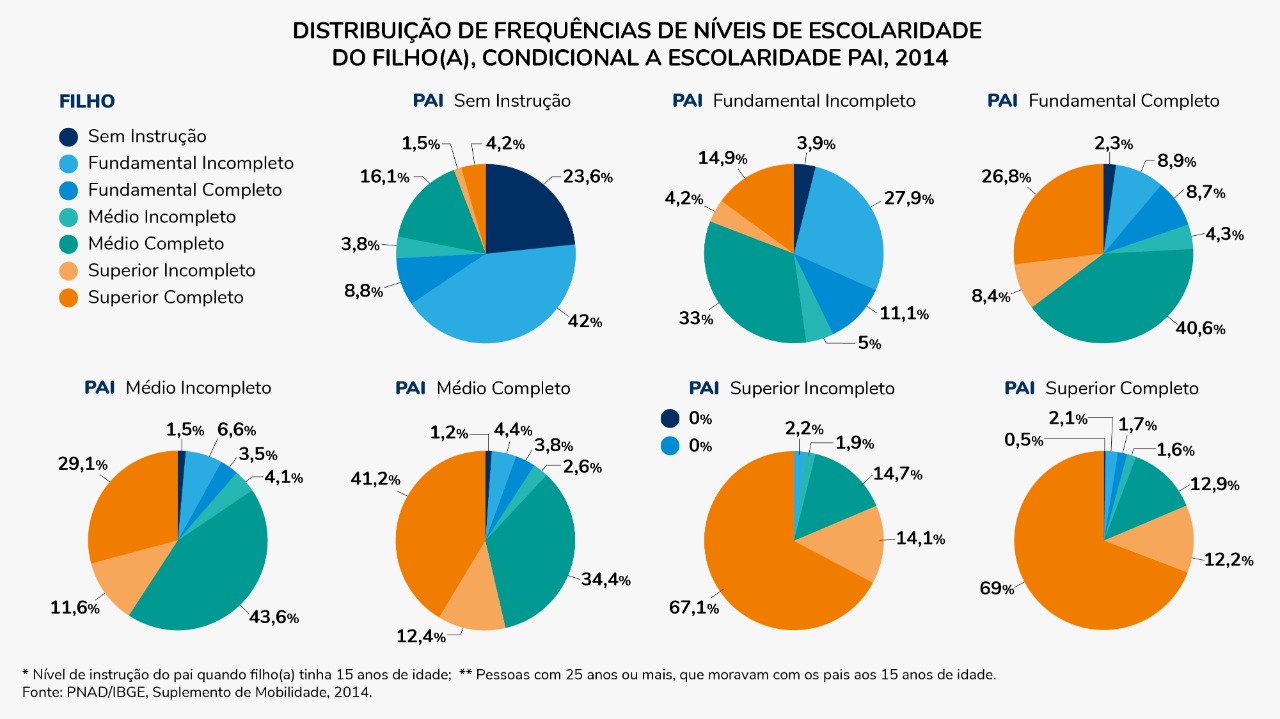This website uses cookies so that we can provide you with the best user experience possible. Cookie information is stored in your browser and performs functions such as recognising you when you return to our website and helping our team to understand which sections of the website you find most interesting and useful.

A realistic construction of the future
Depending on where you look, it is possible to see several Brazils accommodated in these very same 8.5 million square kilometers. There is a country of extreme inequality coexisting with the one that is in fact one of the ten largest economic powers on the planet. This is the place where an integrated and accessible public health system, considered exemplary in many ways, co-exists with patients sleeping on stretchers along hospital corridors. There are problems and contradictions of all kinds. But one malaise, in particular, has not gotten the attention it deserves, despite its importance. And that is the difference in opportunities between the rich and poor when it comes to simply getting ahead in life. We live in a country where dreams of the future are silently stolen from those of our children born in less favored classes.
The severity of the problem is stamped on the graph that illustrates this report. It is a comparison made by the Organization for Economic Cooperation and Development (OECD), showing the estimated time that a person, born among the poorest, takes to reach the average income of the population. The poorest Brazilians are told there that their descendants will take nine generations to finally be accommodated in the country’s middle income strata. That is if all goes well in the end, despite the comings and goings of that lifetime. “The lack of social mobility perpetuates inequality, commonly cited as the great Brazilian tragedy. In other words, it amplifies injustices and takes away from the country, from our young people, the ability to dream of a better life”, reflects Paulo Tafner, CEO of the Institute for Mobility and Social Development (IMDS).
Another way to understand Tafner’s warning is to put oneself in the shoes of a family man from Denmark, a country that leads the social mobility ranking. There, the same path towards the average national income takes two generations to reach. In other words, the poor person will still see his grandson grow in life and will surely see his son having chances that he himself did not have. Not here. The poor will have poor grandchildren, and the rich will have rich grandchildren, and those will be rich grandparents. We are tied, in this regard, with South Africa and slightly ahead of Colombia, where reaching that goal takes 11 generations. The average, among all countries included in the ranking by the OECD, is 4.5 generations.
Here goes yet another way of looking at the issue from a strictly Brazilian angle. In current conditions, the descendants of slaves freed in 1888 will only have reached the middle tier around the year 2113. This, considering the period of each generation to be 25 years. Of course, some have already risen to this level, but they are exceptions graciously sustained by those who had improved circumstances in life. And this is what we are discussing. Chances for everyone; many such chances, and with assuredness. This is a fundamental and complex job. Finding these paths is no easy matter, as we ourselves are not entirely familiar with them yet.

Access to social mobility involves experiencing certain things that those who have take completely for granted. An example: in Mexico, the “Piso Firme” program distributed cement to alleviate the effect of poor housing on children’s health. By eliminating the contact of bare feet with the dirt floor, the initiative reduced the incidence of intestinal diseases in the child population and, consequently, school absenteeism – which led to more efficient learning and has had intergenerational effects. Who would have thought?
Many other fields of activity are seen by those who study the theme in depth. Depending on the situation, the recommended intervention may involve the health of pregnant women, the training of young people for entrepreneurship, prenatal care, support for cognitive development in early childhood, development of socioemotional skills, prevention of violence, and even encouraging a change of address. The drama is that you cannot do all of this at the same time guaranteeing the accuracy of your application. For decades, the country has chosen at least one path, that of education. Governments, businessmen and third sector institutions have focused on the topic and have been doing a good job. But Brazil remains the place where only 4.7% of the children of uneducated parents reach higher education, while 69.7% of the children of college graduates will have a graduation party of their own to mark their college graduation.
To try to find the paths that lead to the improvement of consolidated life, social scientists have long pursued the so-called exit doors from poverty. This is one way of assuring that those who have managed to improve do not fall back on the tides of ephemeral programs. One way to do this is to try to impose conditions for a family to continue receiving a certain benefit from a public program, such as “Bolsa Família”, to name the largest and most famous. This is called conditionality. Compulsory attendance of children at school or having to keep up assiduously with basic health programs are some of these ways and there is great hope that they will work. They do not always work, though. And that is not in itself a problem. The hard part is to insist on using ineffective strategies, which leads us to another predicament: that of wasting public money on what is not actually known to work.

Verifying the results of the programs, proposing public policies based on certainties supported by the best social science available is the first task that the IMDS imposes on itself. The other is to take its conclusions to governments, in whatever sphere, so that successful programs can be replicated. And at no cost to governments. And when talking about IMDS, in this case, it is not necessarily talking about the Institute’s lean team, but about the network of collaborators who will have at their disposal the research platform that is beginning to be formed so that incursions on the subject can be joint and gregarious work.
It works in the following manner: on the one hand, academia, responsible for projects based on the scientific method, developed by partner researchers from national and foreign universities. On the other, city halls, state governments, public managers concerned with solving problems under their jurisdiction. In the middle, the platform of IMDS projects. Programs tested and approved somewhere in the country, in addition to studies endorsed by the IMDS team, will be presented, implemented, and monitored by the Institute. The practice will allow the improvement of other initiatives. The internal team will work on the production of indicators, which will enable this work to continue moving forward. And working together, focusing on what is essential and with the best that science can produce, IMDS officially commences its activities this week.
